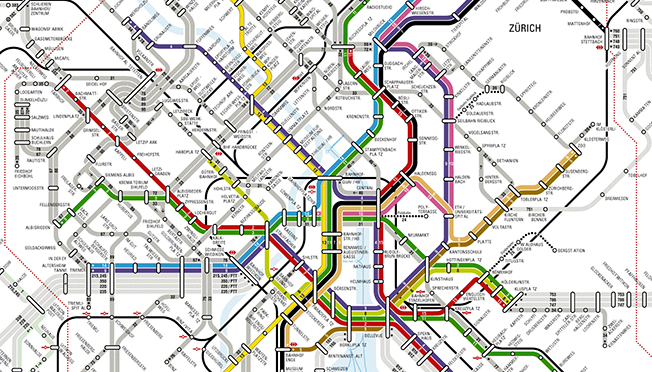
The Federal Office of Transport (FOT) commissioned this research to analyze how improving the speed of the Zurich S-Bahn from the periphery to the center could encourage spatial dispersion.
The public transport department of the canton of Zurich is ultimately planning to segment the Zurich RER network into two concentric zones. On the one hand, the inner zone would continue to operate as it does presently and, on the other hand, in the outer zone, the stations would be fully served up until the boundary between the two zones, then trains would travel directly to the Zurich main station, without stopping in the inner zone.
This segmentation would reduce commuters’ travel time. But can this improved accessibility have the effect of encouraging the spatial dispersion? Can it foster the development of the outermost regions of the metropolis area, which are primarily concerned with this improved supply at the expense of more internal areas not covered or worsened by this development?
The aim of the research, commissioned by the Federal Office of Transport at the CEAT (Urban and Regional Planning Community), is to determine whether there is a measurable and demonstrable effect between changes in the accessibility of a given city towards the center and the development of its metropolis.
| Principal investigator | Prof. Vincent Kaufmann |
|---|---|
| Project manager | Dr. Pierre Dessemontet |
| Sponsor | Office fédéral des transports (OFT) |
| Period | 2013 |
| Laboratory | CEAT |
| Collaboration | TRACE |